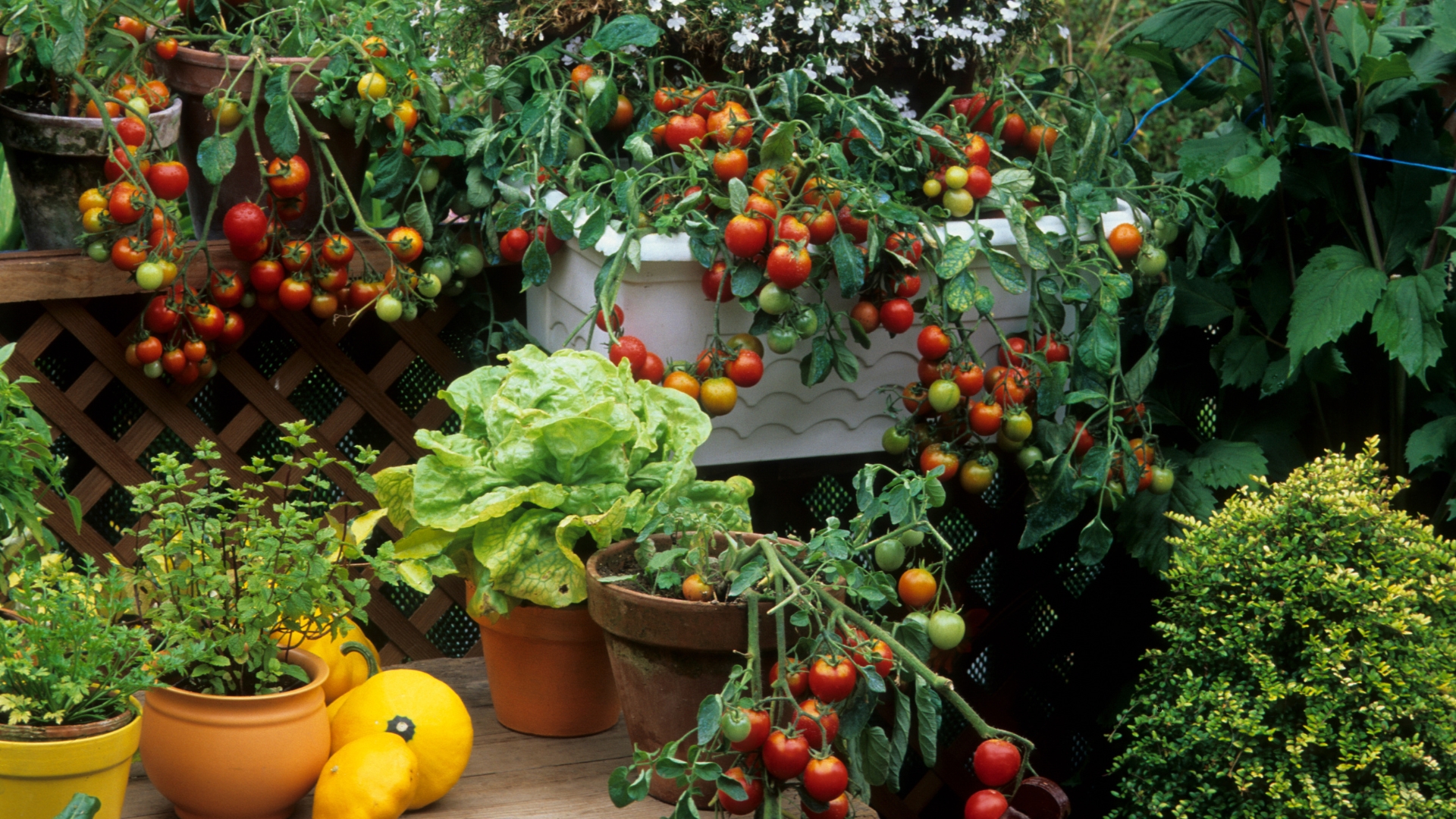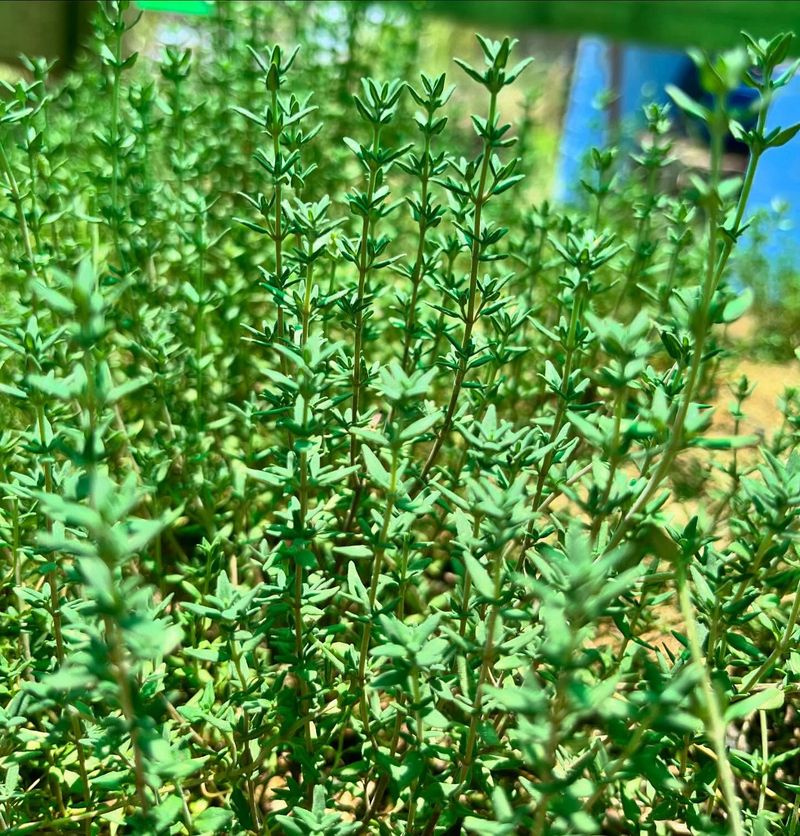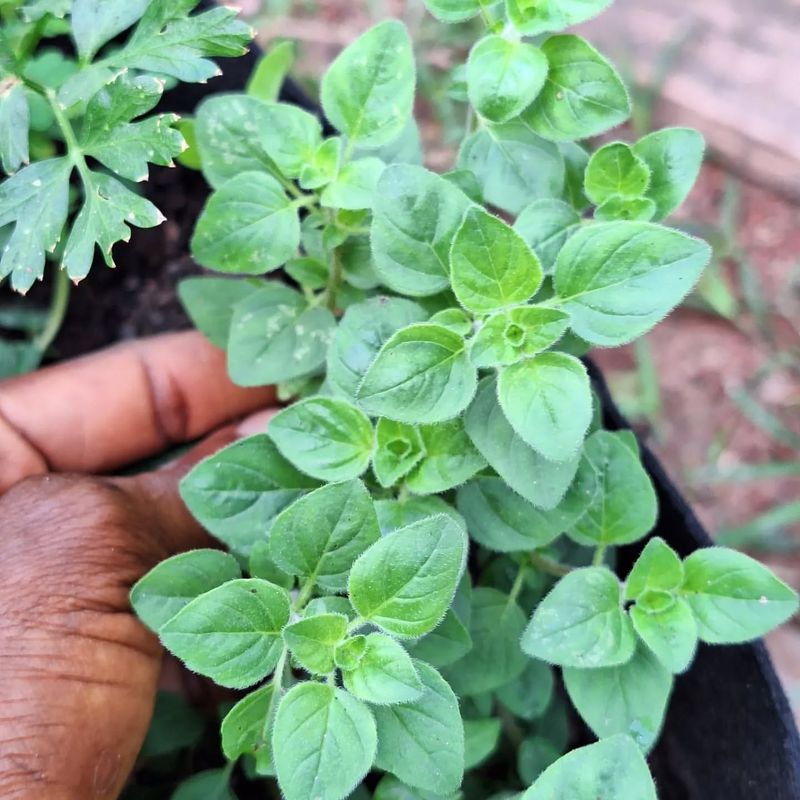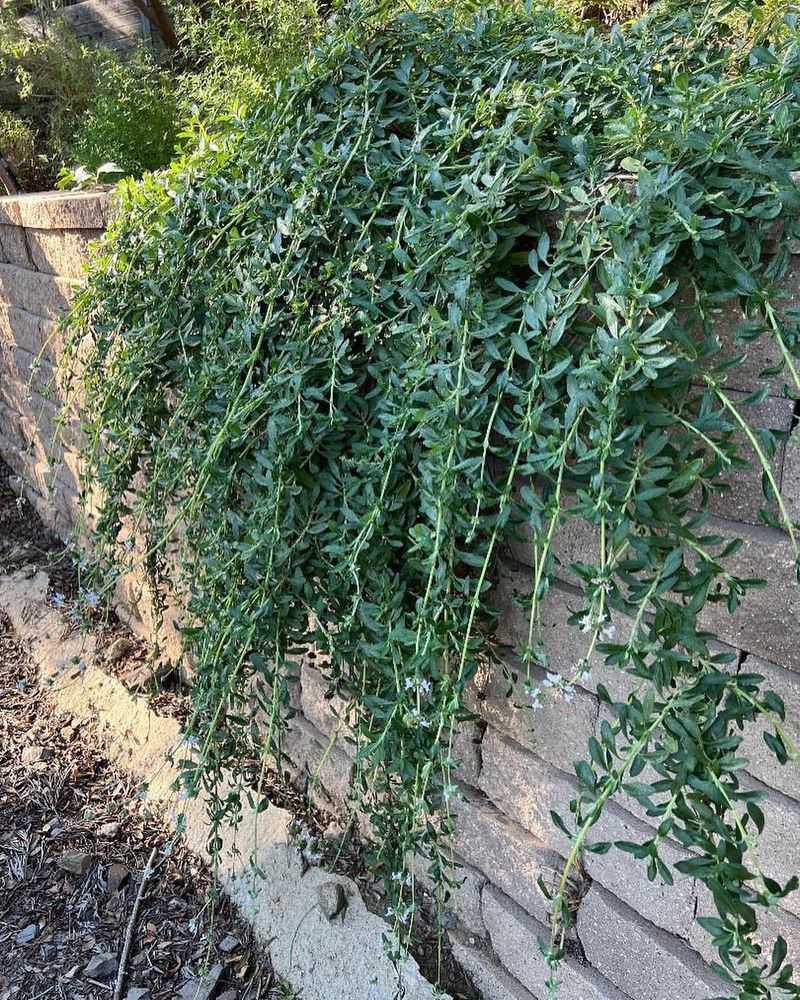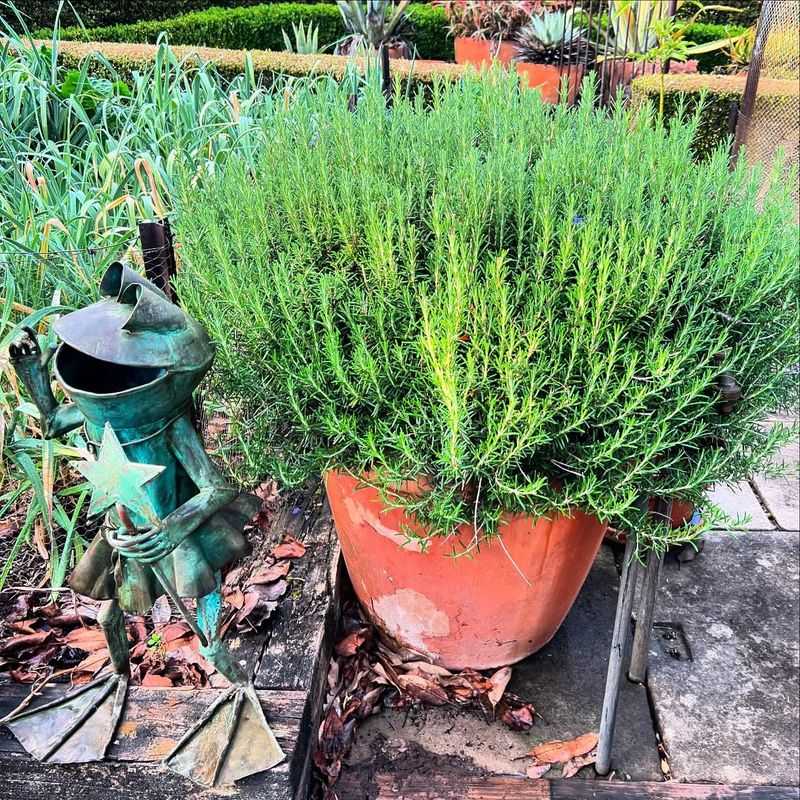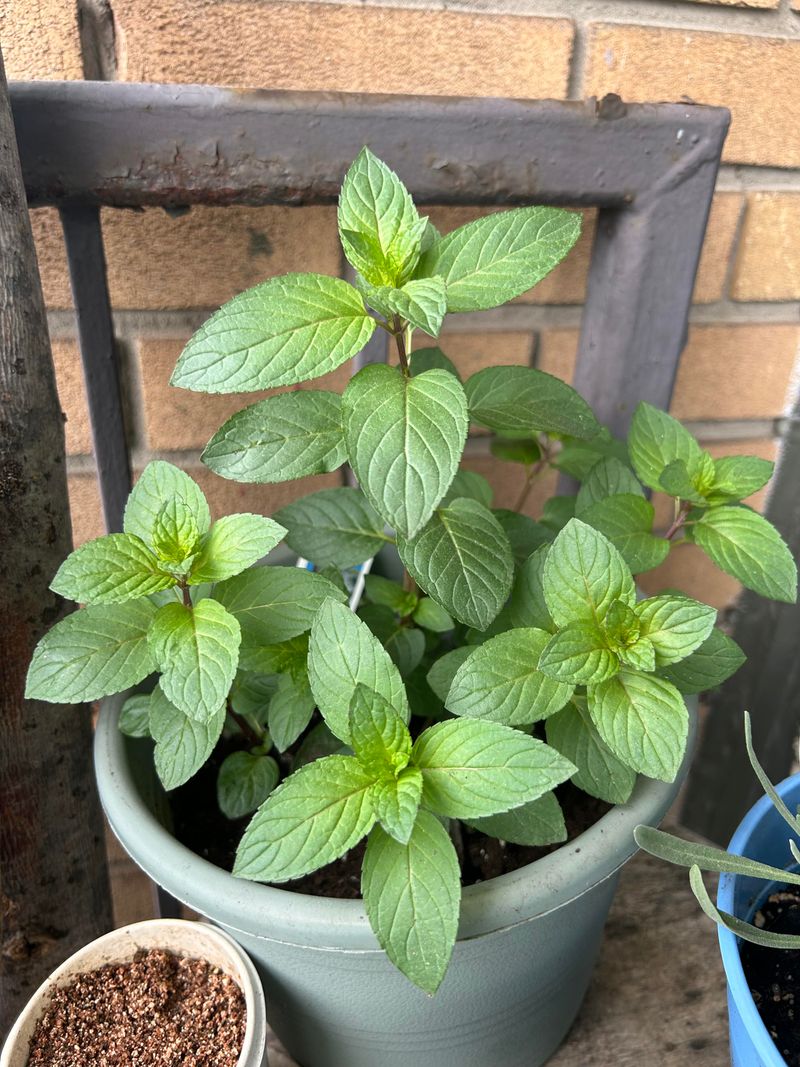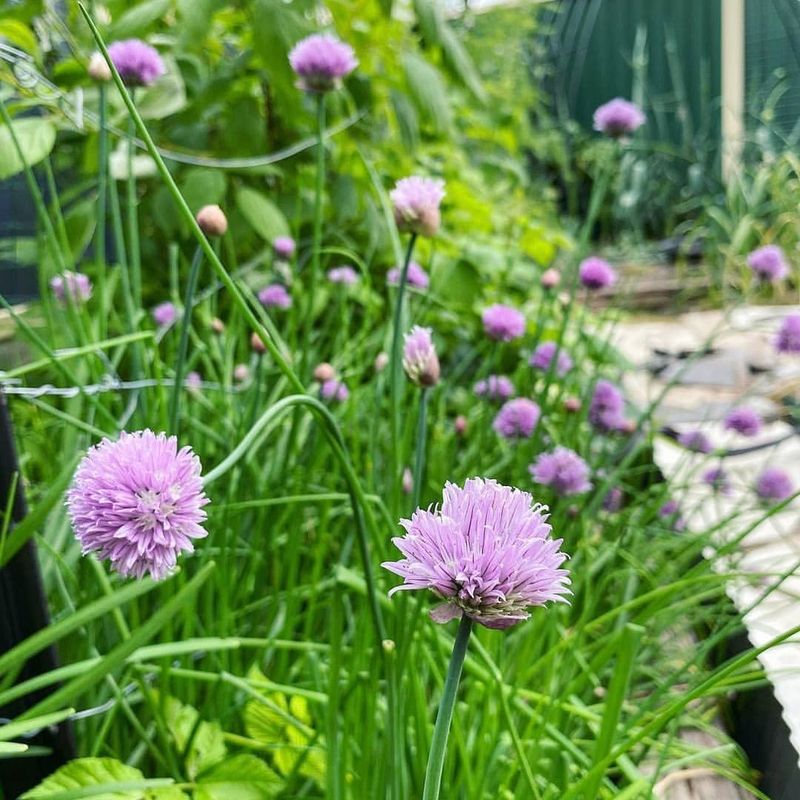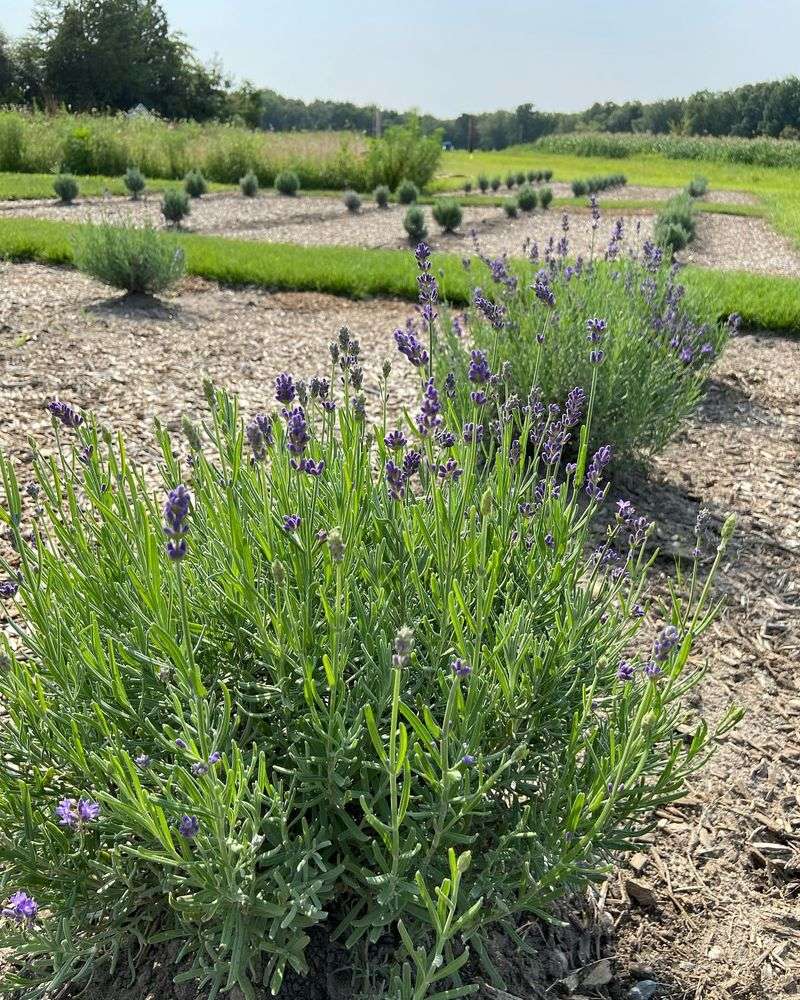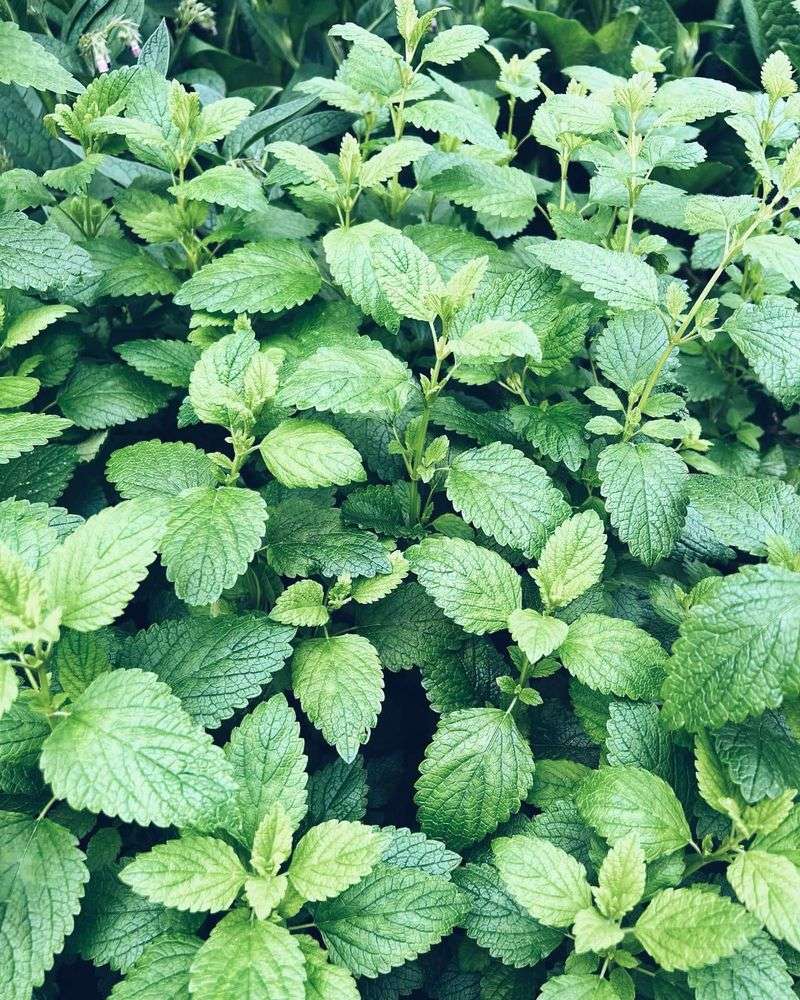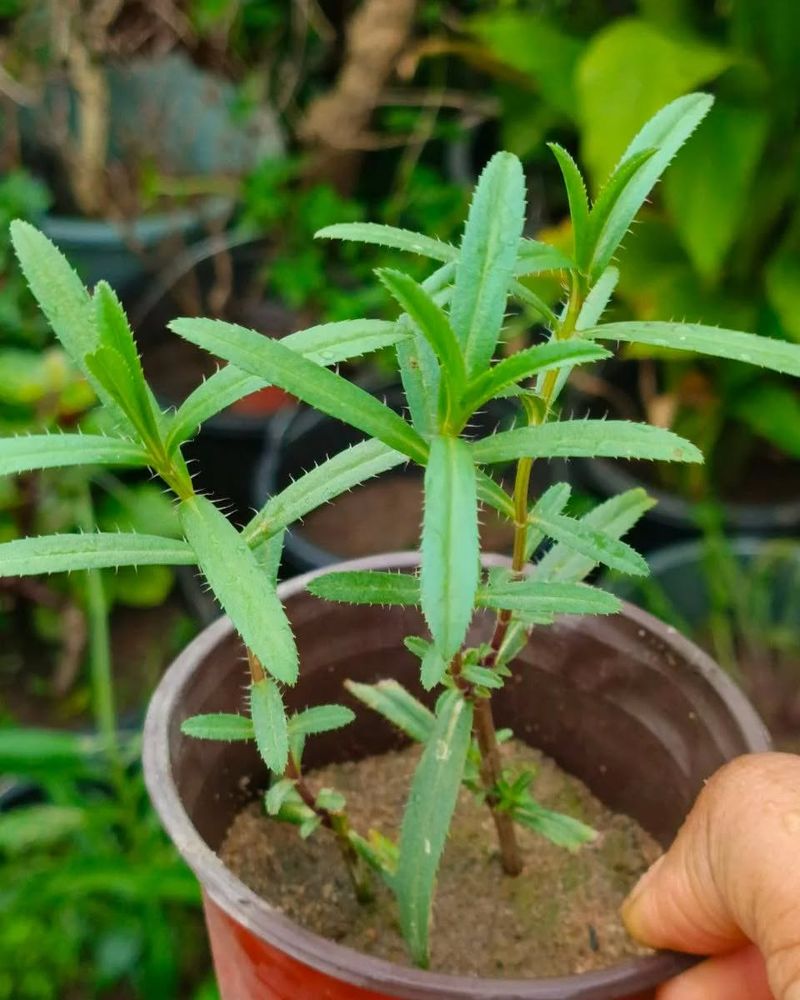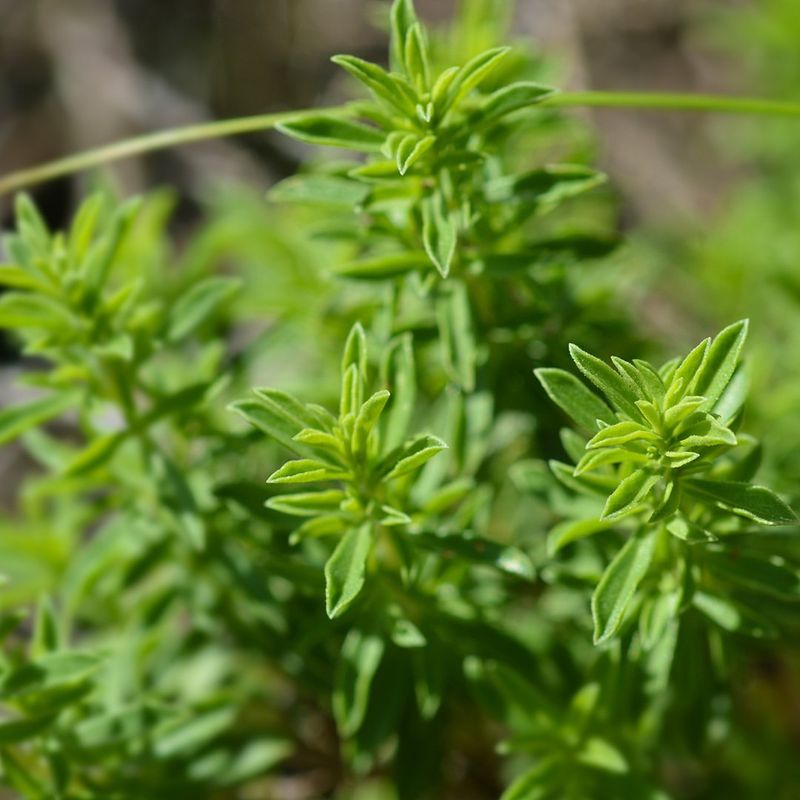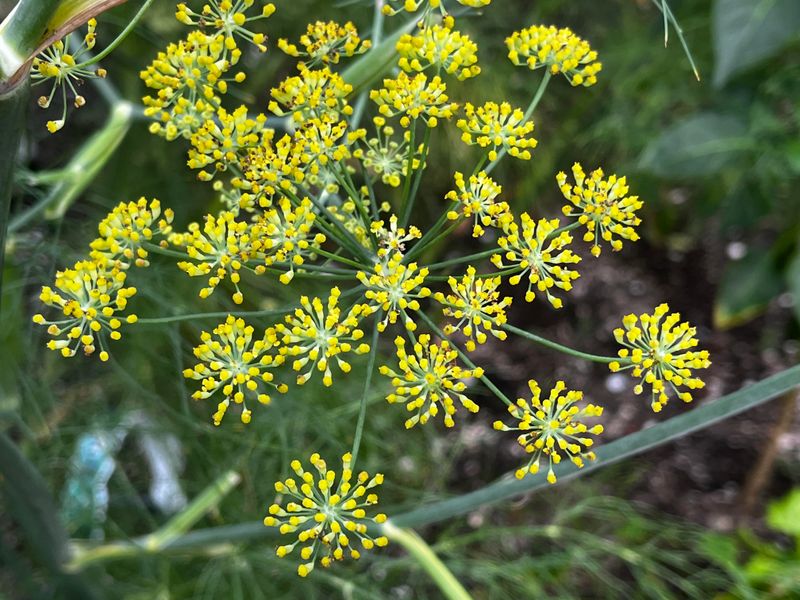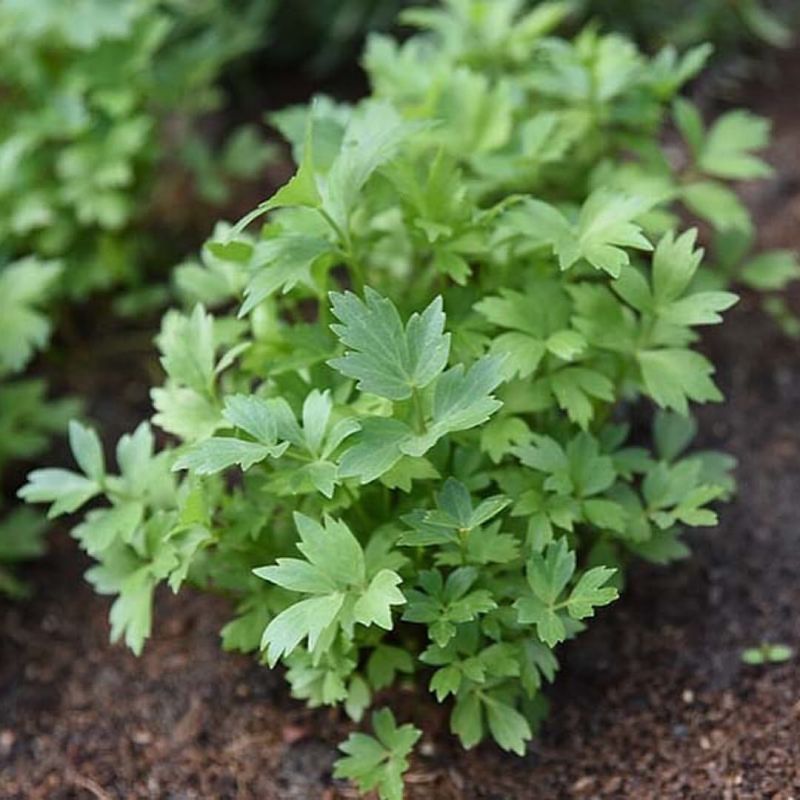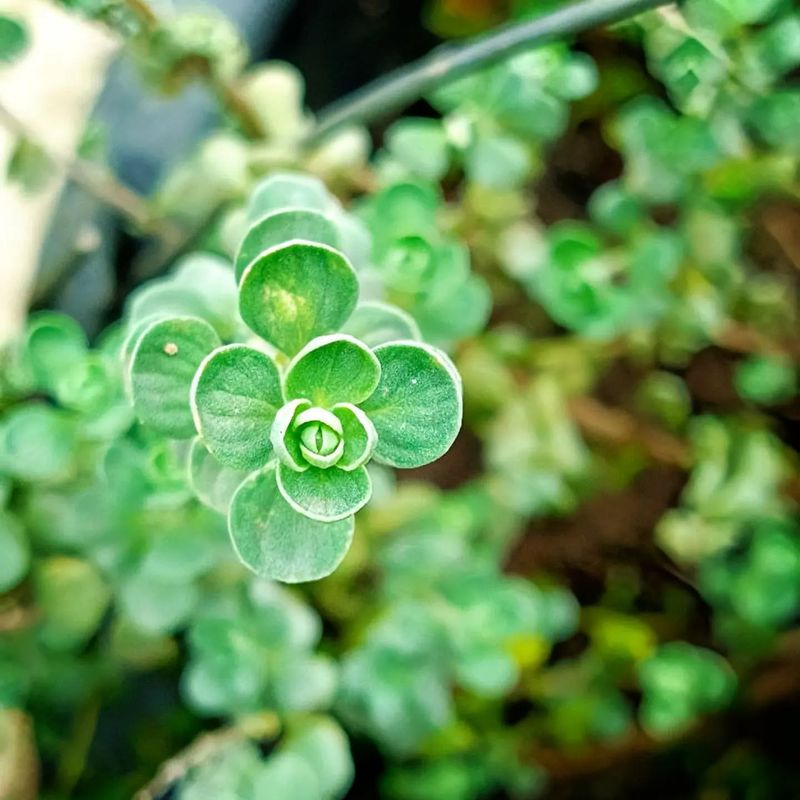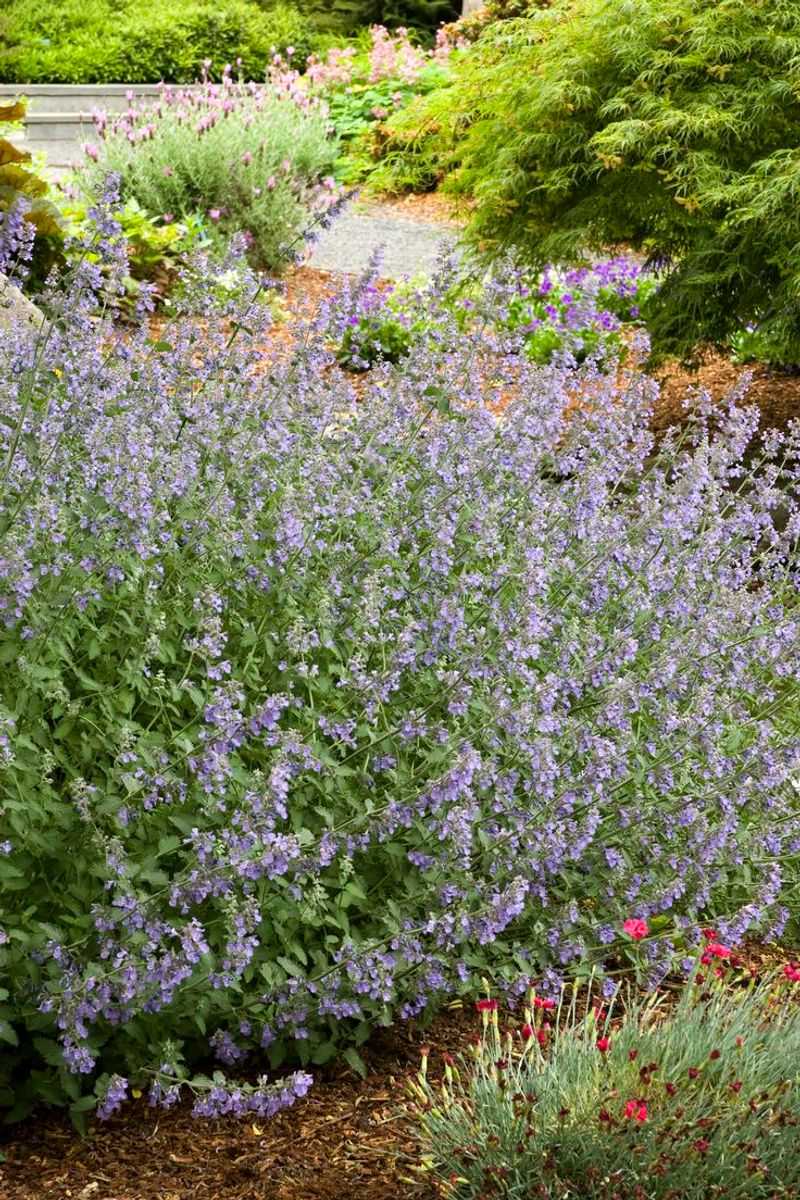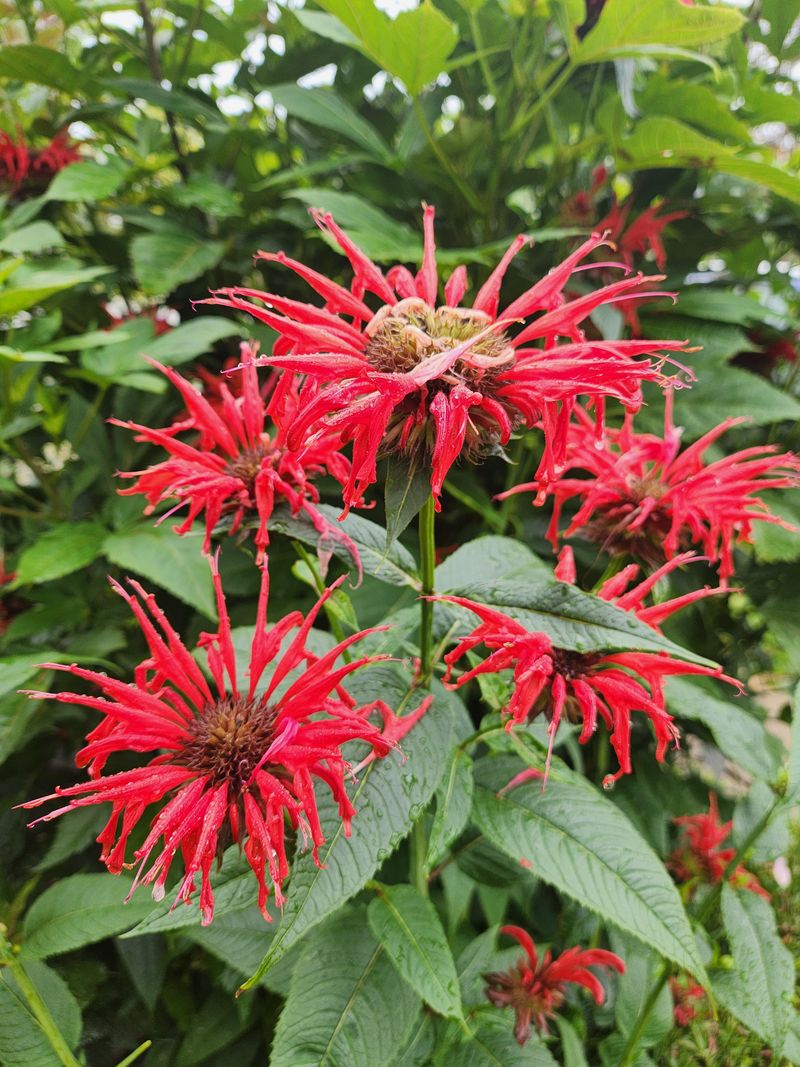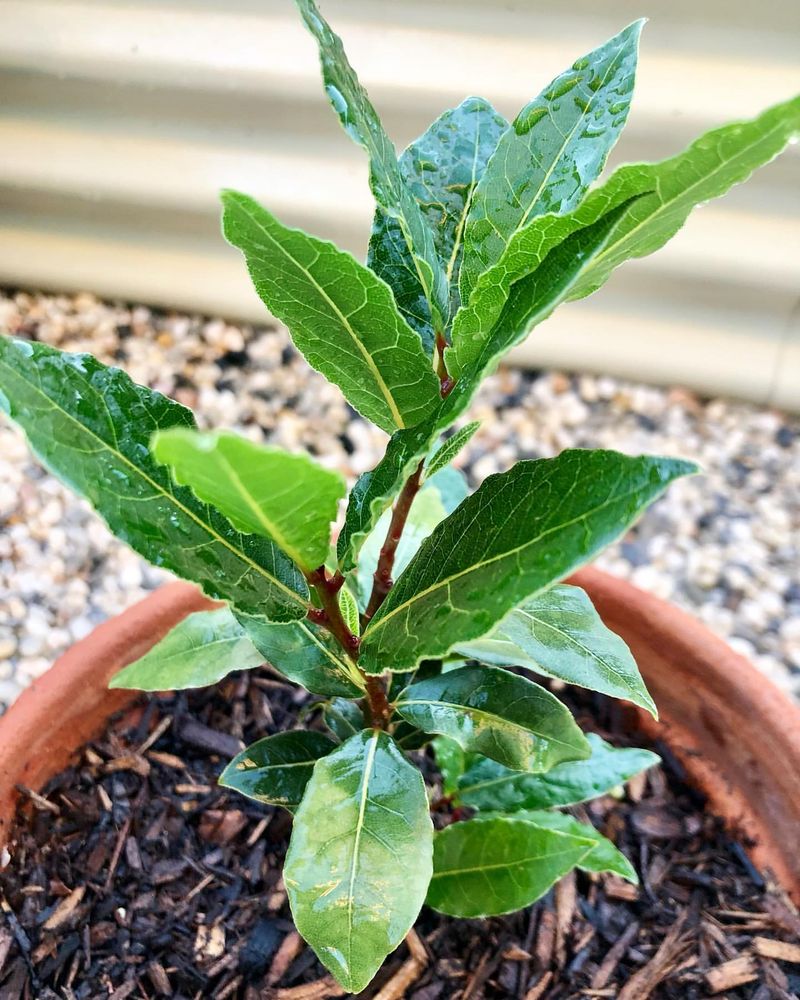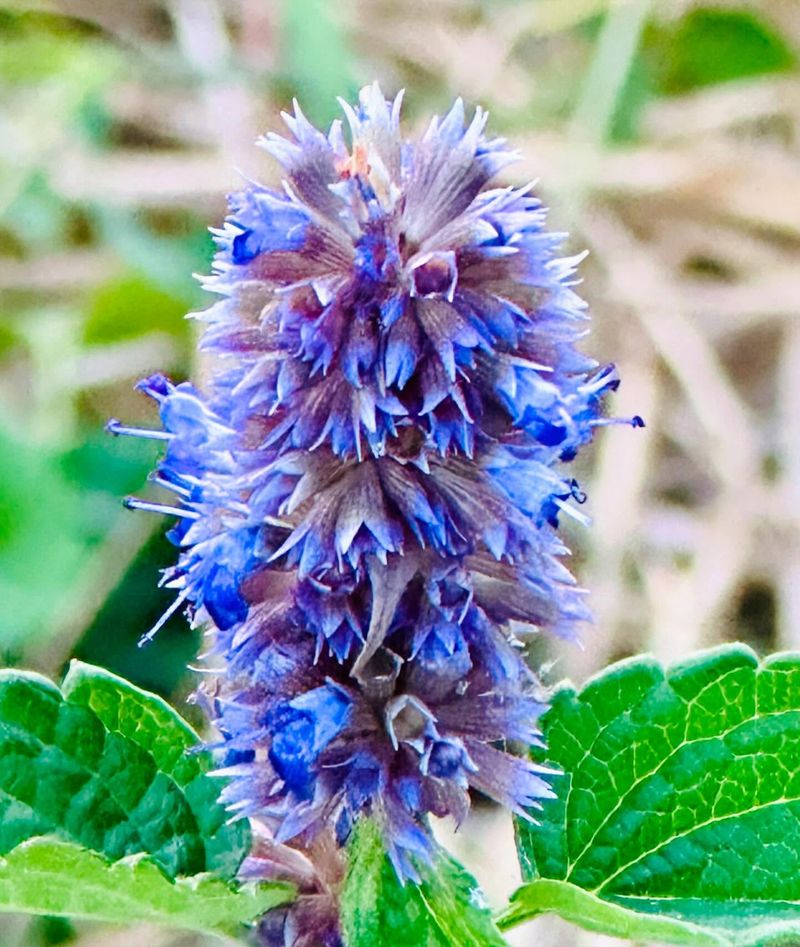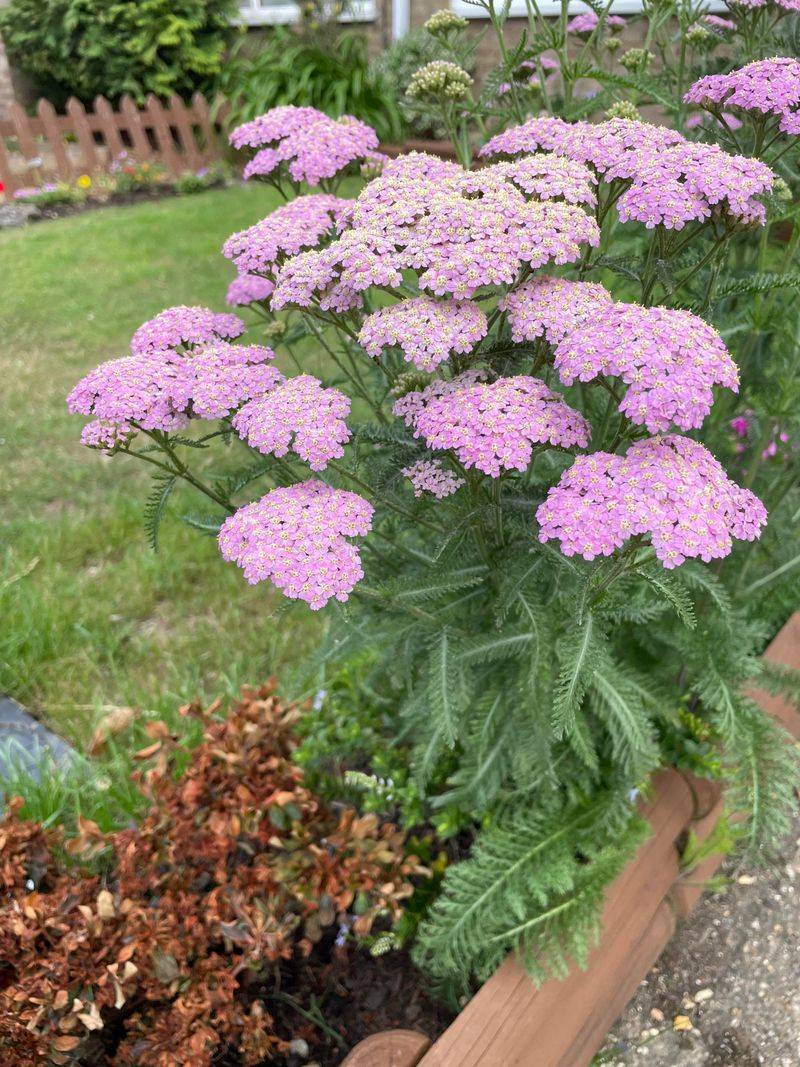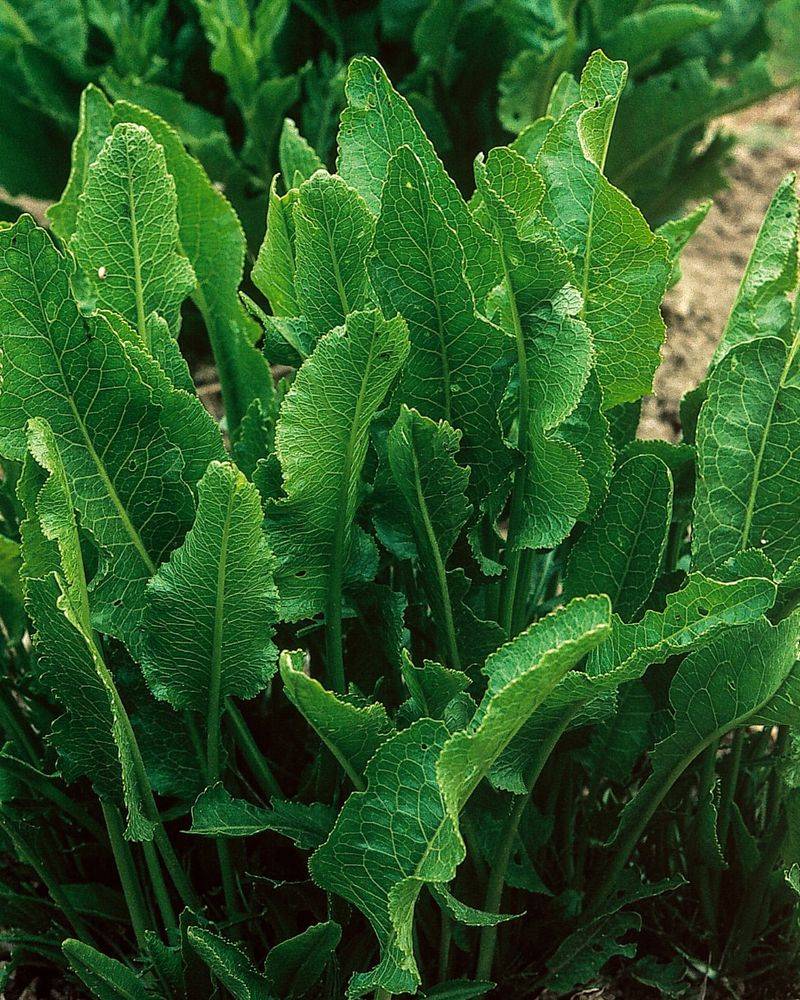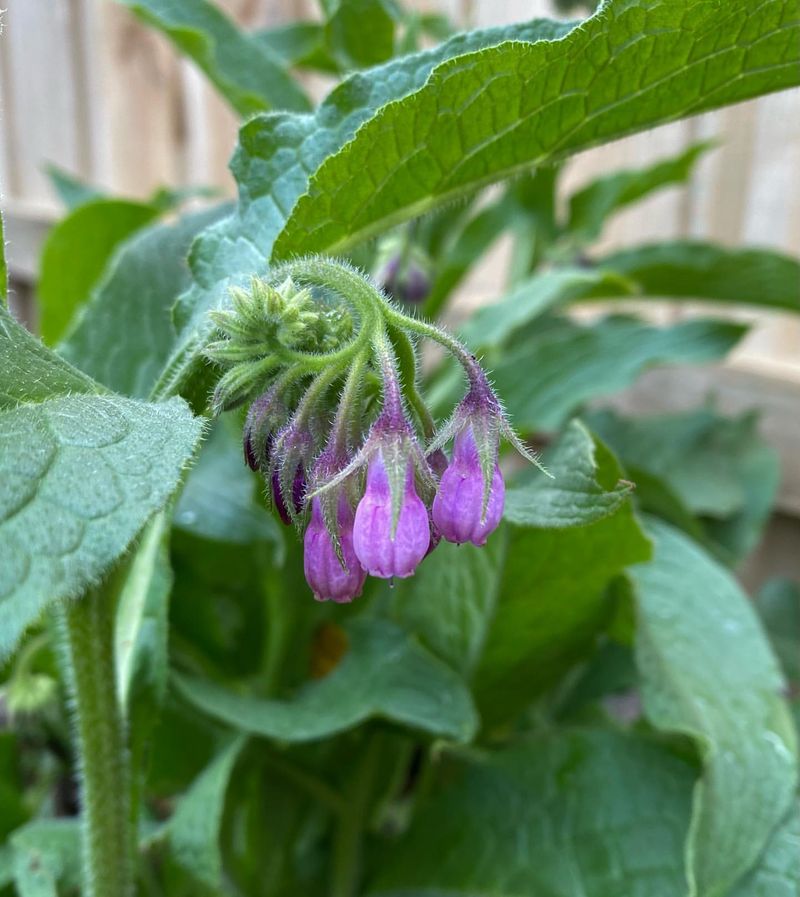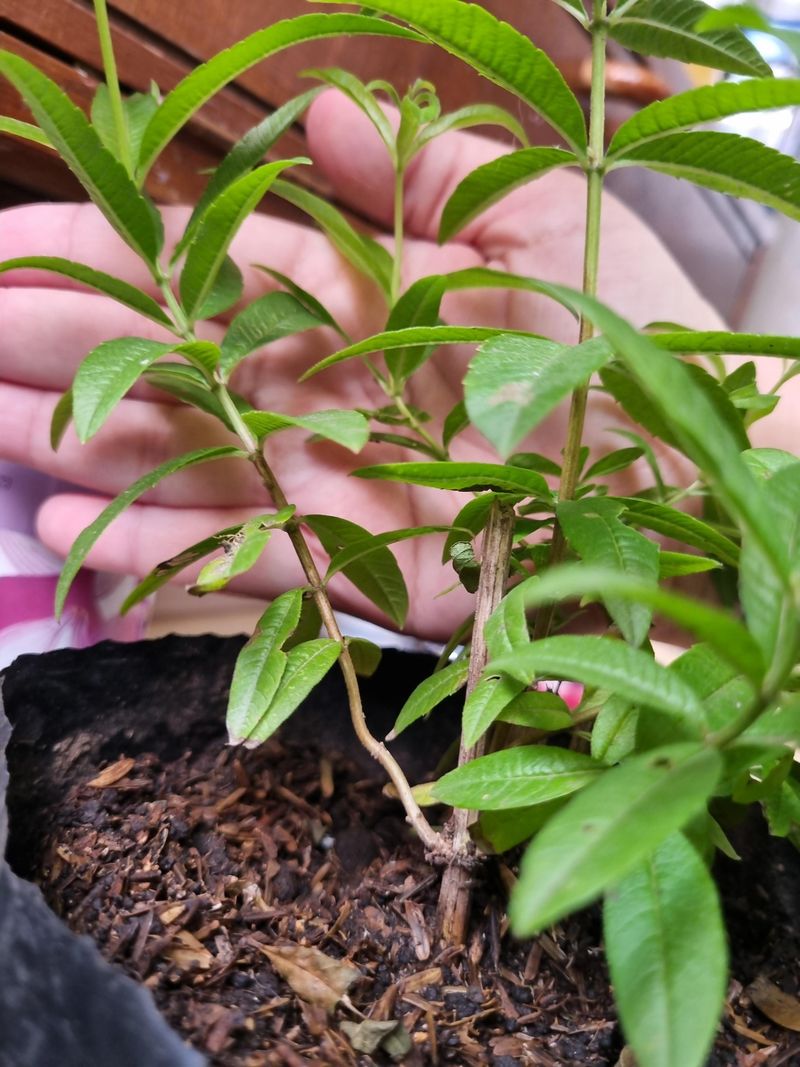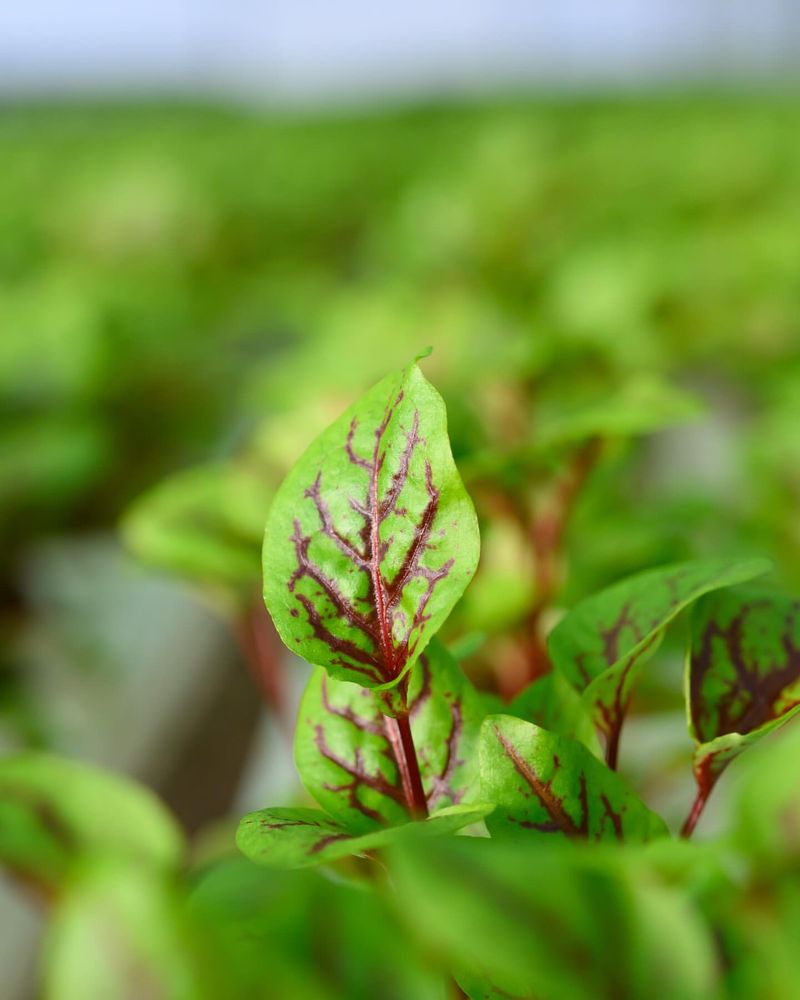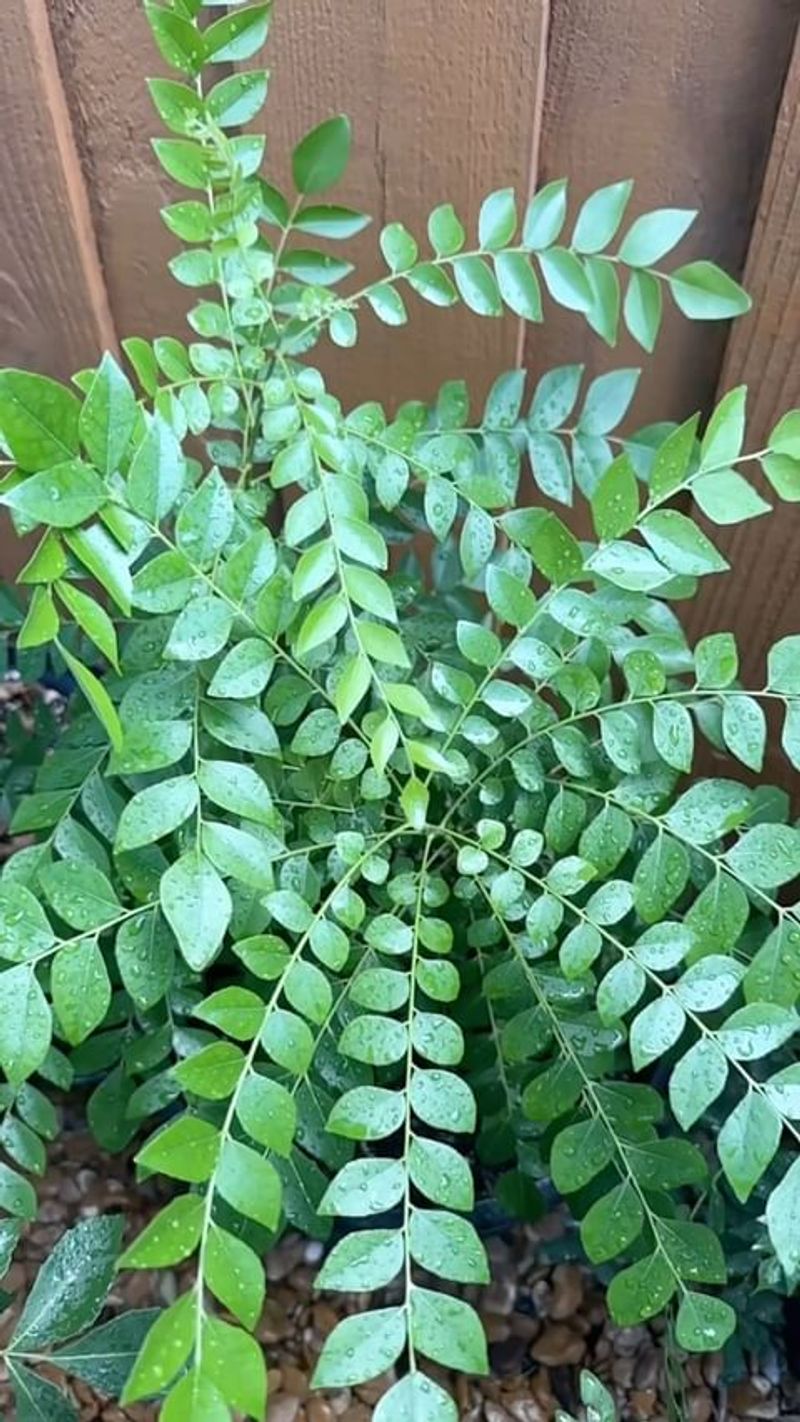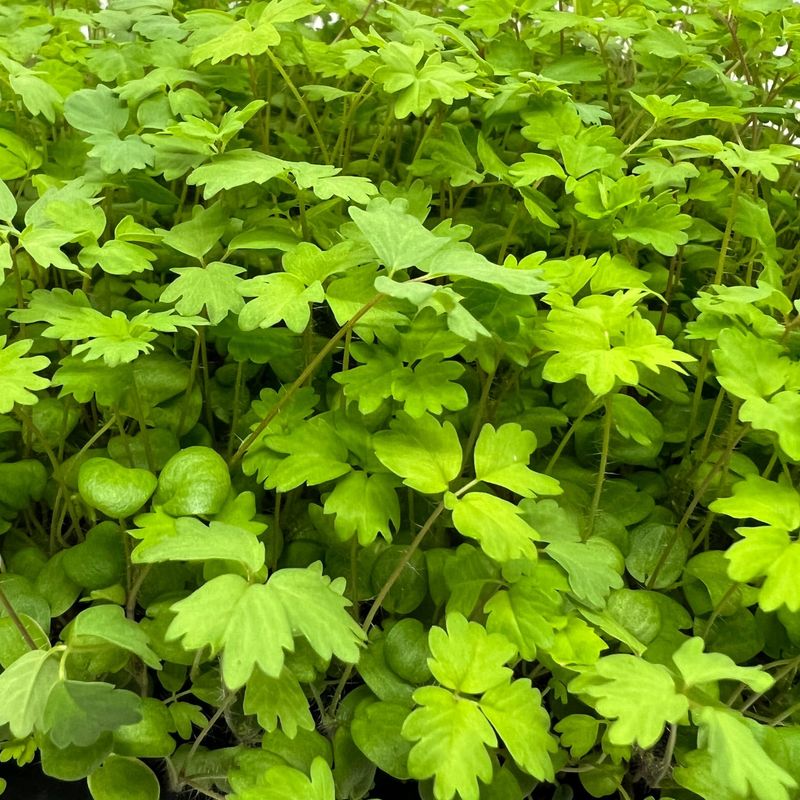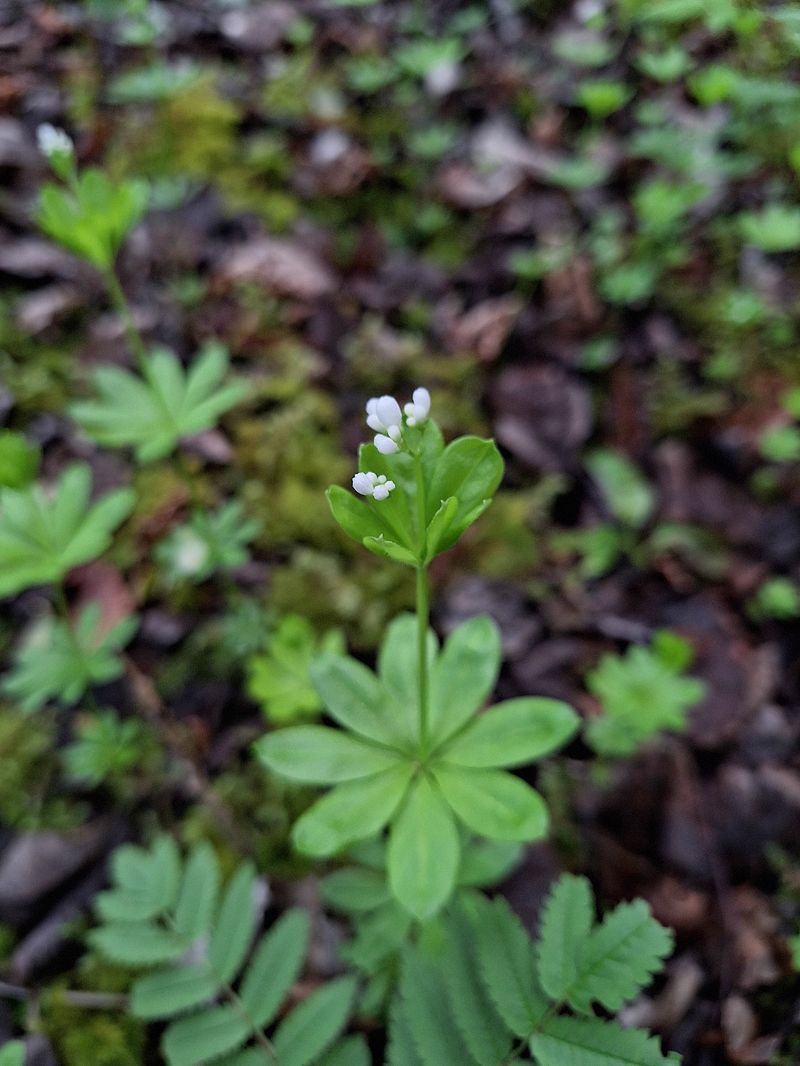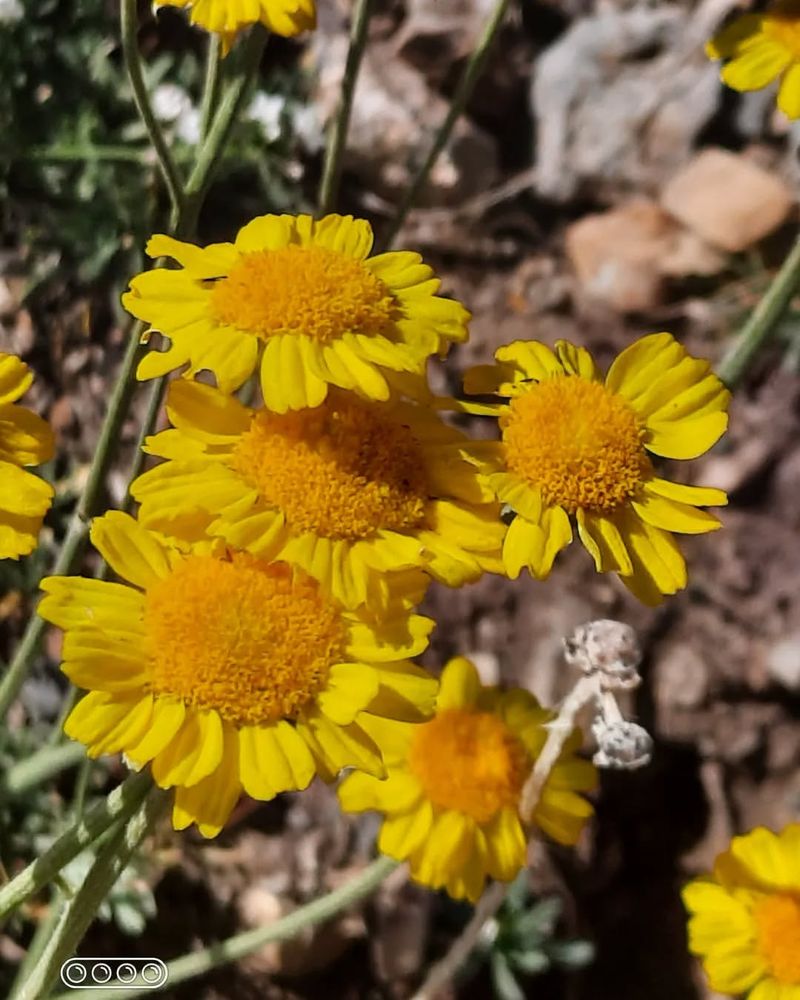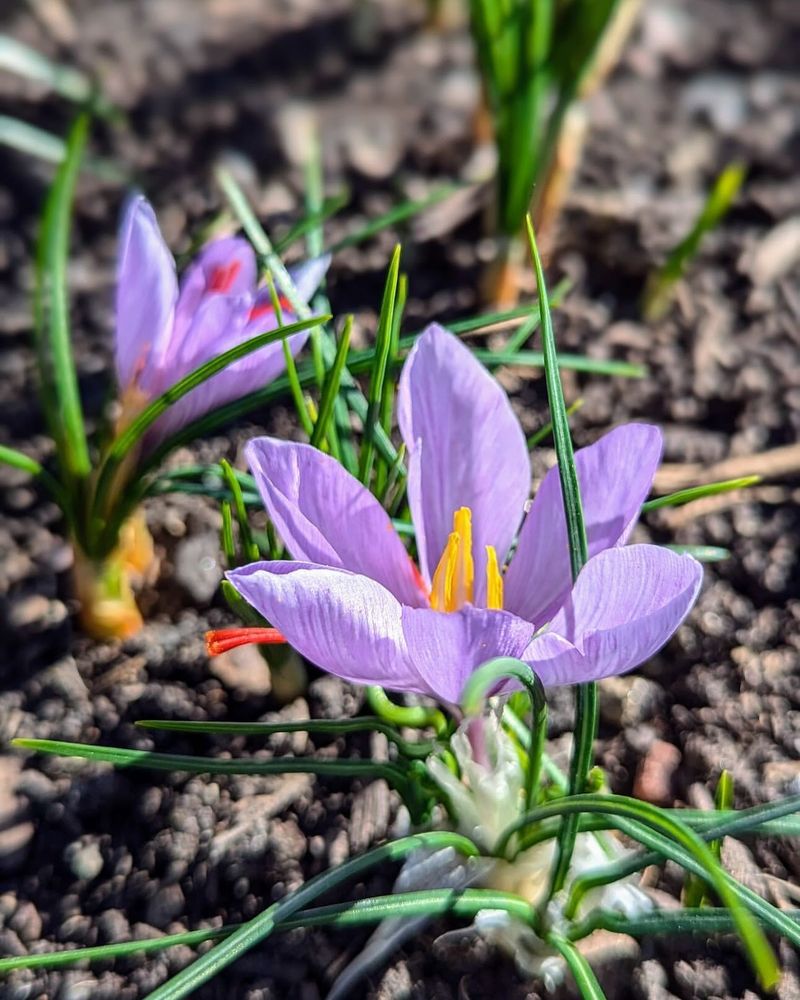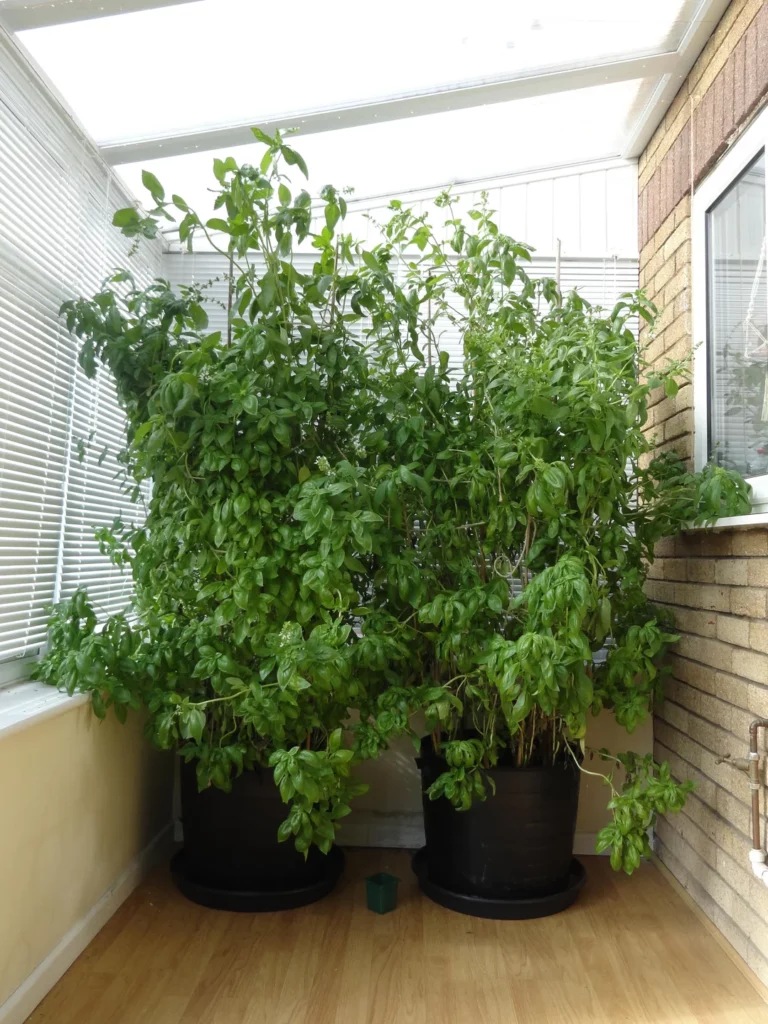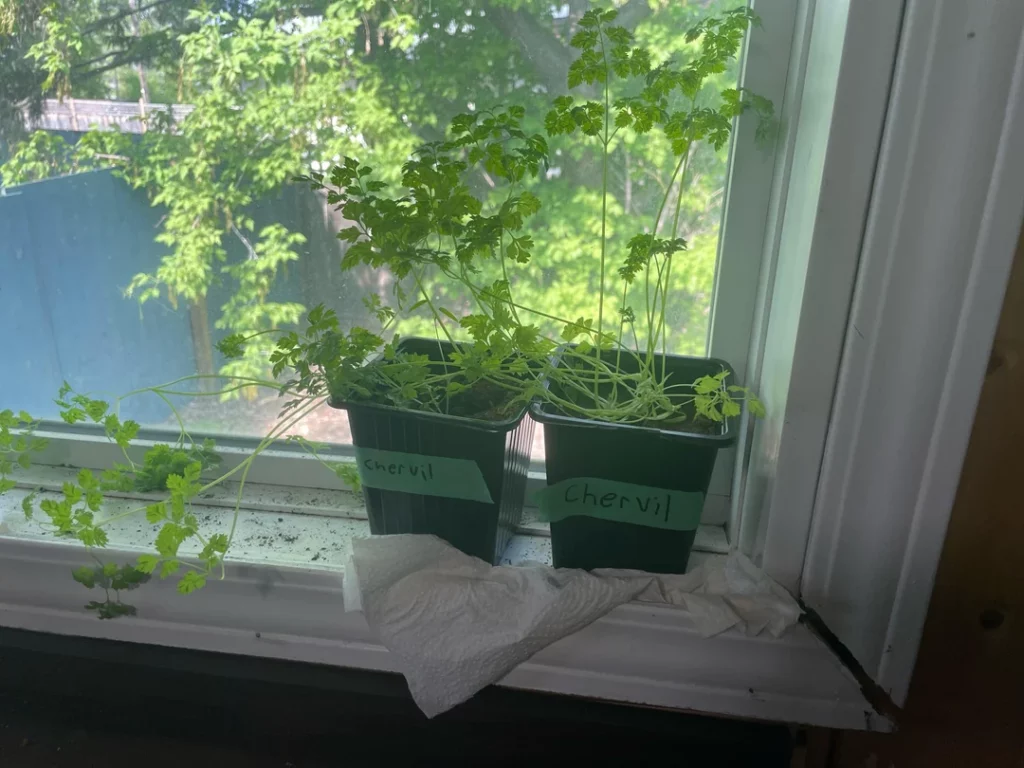Hey gardening friends! Have you ever wondered which perennial herbs can be the best companions for your vegetables? Well, you’re in for a treat.
Growing these vibrant and resilient herbs alongside your veggies not only enhances the garden’s aesthetic appeal but also offers practical benefits like pest control, improved growth, and flavor enhancement.
Let’s explore these perennial wonders and discover how they can transform your garden into a thriving, aromatic paradise.
1. Thyme
This low-growing herb boasts tiny, aromatic leaves with a subtle earthy flavor. Thyme is a perennial wonder that thrives in various conditions, making it an ideal garden staple. Its resilience and adaptability are impressive, providing year-round greenery and a fresh, zesty aroma.
When planted with vegetables, thyme acts as a natural pest deterrent. Its pungent scent confuses and repels insects, protecting tender veggie shoots from harm.
Plus, it can enhance the flavor of nearby produce, infusing them with a delightful hint of earthiness. It’s a culinary and gardening ally worth having!
2. Oregano
With its robust, spicy flavor, oregano is a favorite in Mediterranean cuisine. This herb is not only a culinary delight but also a perennial powerhouse in your garden. Oregano’s hardy nature allows it to thrive with minimal care, spreading joy and flavor wherever it grows.
Growing oregano with vegetables offers multiple benefits. Its aromatic oils deter pests, creating a protective barrier for your plants.
Additionally, it encourages pollinators, boosting your garden’s productivity. A little oregano goes a long way in enhancing both the garden and the dishes it graces.
3. Sage
Soft and velvety, the leaves of sage bring a touch of elegance to any garden. This perennial herb is known for its earthy aroma and distinctive flavor, which adds depth to various culinary creations. Sage enjoys sunny spots and well-drained soil, thriving effortlessly year after year.
Companion planting with sage benefits vegetables in numerous ways. Its strong scent repels common garden pests, safeguarding your precious crops.
Furthermore, sage’s presence attracts beneficial insects, contributing to a balanced ecosystem. Let sage be the guardian of your vegetable garden, offering protection and flavor.
4. Rosemary
Needle-like leaves and a woody fragrance define rosemary, an aromatic perennial that evokes the essence of the Mediterranean. This herb flourishes in sunny locations, bringing beauty and practicality to your garden landscape. Rosemary is cherished for its culinary uses and ornamental appeal.
In the vegetable garden, rosemary serves as an excellent companion. Its intense aroma helps mask the scent of vulnerable vegetables, confusing pests and minimizing infestations.
Additionally, rosemary supports pollinators, enhancing the health and productivity of your garden. Embrace rosemary to enrich your gardening experience.
5. Mint
Mint’s vibrant leaves and refreshing scent make it a popular perennial choice for gardeners. Known for its vigorous growth, mint can quickly take over garden beds if not managed carefully. Its lively presence adds a splash of green and a burst of fragrance.
Planting mint with vegetables offers a refreshing twist. Its aromatic oils deter insects, providing a natural pest control solution. However, it’s advisable to contain mint’s growth to prevent it from overshadowing other plants.
When managed, mint becomes a delightful ally, enhancing both garden aesthetics and culinary creations.
6. Chives
Slender green stalks topped with delicate purple blossoms characterize chives, a perennial favorite among gardeners. Known for their mild onion flavor, chives add a subtle punch to dishes while brightening up garden beds with their charming blooms.
Chives are a beneficial companion for vegetables. Their strong scent helps deter aphids and other pests, protecting vulnerable plants. Additionally, the flowers attract pollinators, boosting the garden’s health and productivity.
Incorporating chives into your garden not only enhances flavor but also promotes a thriving ecosystem, making them a valuable addition.
7. Lavender
Lavender’s striking purple spikes and soothing scent create an oasis of calm in any garden. As a hardy perennial, lavender thrives in sunny, well-drained areas, offering year-round beauty and fragrance. This herb is beloved for its calming properties and versatility.
When lavender grows alongside vegetables, it offers more than just aesthetic appeal. Its fragrance deters garden pests, providing a natural shield for your crops.
Moreover, lavender attracts beneficial bees and butterflies, enhancing pollination and boosting vegetable yields. Let lavender bring serenity and balance to your garden landscape.
8. Lemon Balm
Radiating a citrusy aroma, lemon balm brings brightness and vitality to gardens. This perennial herb is known for its calming properties and robust growth, flourishing in sunny or partially shaded locations. Lemon balm’s cheerful presence is a boon for any garden.
In the vegetable patch, lemon balm offers incredible benefits. Its zesty scent repels mosquitoes and gnats, ensuring a more pleasant gardening experience.
Additionally, it encourages beneficial insects, promoting a healthy and productive garden environment. Incorporating lemon balm can uplift both the garden’s spirit and its productivity.
9. Tarragon
With its anise-like flavor, tarragon is a culinary gem in French cuisine. This perennial herb is not only a kitchen favorite but also adds elegance to any garden. Tarragon thrives in sunny spots, providing a continuous supply of flavor and greenery.
Growing tarragon with vegetables offers distinct advantages. Its aromatic qualities deter garden pests, safeguarding your crops. Moreover, it attracts pollinators, enhancing the garden’s productivity.
Tarragon’s presence elevates both the visual appeal and functionality of a vegetable garden, making it an indispensable partner in your gardening endeavors.
10. Winter Savory
Winter savory, with its peppery fragrance, adds warmth to the garden. This perennial herb thrives in well-drained soil and sunny locations, providing year-round greenery and flavor. Known for its culinary versatility, winter savory enhances many dishes with its unique taste.
In companion planting, winter savory offers protective benefits. Its strong scent masks vulnerable vegetable scents, reducing pest attraction.
Additionally, it encourages beneficial insects, contributing to a balanced garden ecosystem. Incorporating winter savory creates harmony and resilience in your vegetable garden, making it a valuable companion.
11. Fennel
Feathery foliage and a sweet, anise-like aroma define fennel, a striking perennial known for its culinary and ornamental value. Fennel thrives in sunny locations and offers a bold visual statement in the garden.
When grown with vegetables, fennel’s aromatic nature provides a dual benefit. It repels harmful pests with its strong scent while attracting beneficial insects like ladybugs and bees.
This dual action helps maintain a balanced ecosystem, ensuring healthy vegetable growth. Fennel adds both beauty and functionality to the garden, making it a cherished addition.
12. Lovage
Resembling celery, lovage is a tall perennial herb with a robust flavor profile. Its impressive height and lush foliage make it a standout plant in any garden, offering both culinary and visual appeal.
Growing lovage with vegetables adds a layer of protection. Its strong aroma deters pests, safeguarding your crops from potential harm. Moreover, lovage improves soil health and attracts pollinators, enhancing garden productivity.
By incorporating lovage, you create a thriving environment where vegetables can flourish, supported by this towering and flavorful ally.
13. Marjoram
Marjoram, with its sweet, citrus-like fragrance, is a perennial delight in the garden. Known for its mild flavor, marjoram complements various dishes, offering a subtle yet impactful taste experience.
It flourishes in sunny spots, adding charm and aroma to garden spaces.
In a vegetable garden, marjoram plays a protective role. Its aromatic oils deter harmful insects, reducing pest-related damage.
Additionally, it promotes beneficial insect activity, boosting plant health and productivity. Growing marjoram alongside vegetables creates a harmonious and productive garden, filled with delightful scents and flavors.
14. Catmint
With its lavender-blue blooms, catmint adds a splash of color and vibrancy to gardens. This perennial herb is renowned for its resilience and ability to thrive in various conditions, making it a reliable garden choice.
Catmint’s presence benefits vegetables by attracting pollinators like bees and butterflies. This increased pollinator activity boosts vegetable yields and enhances garden biodiversity.
Additionally, catmint’s scent deters pests, providing natural protection for your crops. By integrating catmint, you create a buzzing haven where vegetables and flowers thrive together in perfect harmony.
15. Bee Balm
Bee balm’s stunning red blooms create a visual spectacle in the garden. As a perennial herb, it not only adds beauty but also supports the ecosystem by attracting pollinators. Bee balm thrives in well-drained soil and enjoys sunny locations.
In a vegetable garden, bee balm offers significant benefits. Its bright flowers lure bees, butterflies, and hummingbirds, enhancing pollination and boosting vegetable productivity.
Additionally, its aromatic foliage helps deter pests, creating a protective barrier for your crops. Bee balm is a vibrant and valuable companion in any vegetable garden.
16. Bay Laurel
Bay laurel’s glossy leaves and aromatic scent evoke a sense of elegance and strength. This perennial shrub thrives in sunny spots, offering year-round greenery and culinary delight. Bay leaves are a staple in many cuisines, adding depth and flavor to dishes.
In the vegetable garden, bay laurel serves as a protective ally. Its strong aroma helps repel pests, safeguarding your crops.
Moreover, its presence enhances garden aesthetics, creating a lush and inviting space. Incorporating bay laurel in your garden ensures a dynamic environment where vegetables can grow protected and abundant.
17. Hyssop
Striking blue flowers and a minty aroma characterize hyssop, a perennial herb prized for its beauty and versatility. Hyssop thrives in sunny locations with well-drained soil, offering year-round interest and benefits.
Hyssop’s presence in a vegetable garden attracts pollinators like bees and butterflies. This boosts pollination, enhancing vegetable yields and garden productivity. Additionally, hyssop’s aromatic oils help deter pests, providing natural protection for your crops.
By including hyssop, you create a vibrant and balanced garden ecosystem, filled with beauty and buzzing life.
18. Yarrow
Yarrow, with its feathery foliage and clusters of white flowers, exudes a wild charm in the garden. This hardy perennial thrives in various conditions, making it a resilient addition to any landscape.
When grown with vegetables, yarrow offers ecological benefits. Its presence attracts beneficial insects, such as ladybugs and lacewings, which help control pest populations.
Moreover, yarrow’s deep roots improve soil structure and nutrient availability, supporting vegetable growth. By incorporating yarrow, you create a synergistic environment where plants and beneficial insects coexist harmoniously.
19. Horseradish
Large, glossy leaves and a pungent root define horseradish, a perennial with both culinary and garden appeal. Horseradish is known for its zesty flavor, adding a kick to various dishes.
In the vegetable garden, horseradish plays a protective role. Its strong aroma deters pests, safeguarding your crops from potential harm. Additionally, horseradish’s deep roots improve soil aeration and nutrient uptake, benefiting surrounding plants.
By growing horseradish with your vegetables, you create a dynamic garden environment where flavor and function thrive side by side.
20. Comfrey
Comfrey’s broad leaves and bell-shaped flowers add a lush beauty to any garden. As a perennial herb, comfrey is renowned for its soil-enriching qualities, making it a valuable addition to sustainable gardening practices.
In the vegetable garden, comfrey offers multiple benefits. Its deep roots draw up nutrients from the subsoil, enriching the topsoil for nearby plants. Additionally, comfrey’s presence attracts beneficial insects, supporting a balanced ecosystem.
By including comfrey, you create a thriving garden environment, promoting healthy vegetable growth and ecological harmony.
21. Lemon Verbena
Bright green leaves and a refreshing citrus aroma define lemon verbena, a beloved perennial for its vibrant presence. This herb thrives in sunny spots, offering year-round beauty and fragrance.
In a vegetable garden, lemon verbena plays a supportive role. Its aromatic oils deter pests, providing natural protection for your crops. Additionally, lemon verbena’s presence enhances garden aesthetics, creating an inviting and fresh-smelling environment.
By growing lemon verbena with your vegetables, you add a touch of elegance and functionality to your garden space.
22. Sorrel
Sorrel, with its broad, arrow-shaped leaves, brings a wild touch to the garden. This perennial herb is celebrated for its tangy flavor, which adds a unique zest to culinary dishes.
Growing sorrel with vegetables offers distinct advantages. Its presence deters common garden pests, safeguarding your crops. Additionally, sorrel’s vigorous growth helps suppress weeds, reducing competition for nutrients.
By including sorrel, you create a resilient and productive garden environment, where vegetables can thrive amidst lush greenery and natural protection.
23. Curry Leaf
Glossy leaves and a distinct aroma characterize the curry leaf plant, a perennial herb cherished in culinary traditions. This herb thrives in warm climates, offering year-round greenery and flavor enhancement.
In the vegetable garden, the curry leaf plant acts as a natural protector. Its strong scent repels pests, safeguarding your crops from harm. Additionally, it enhances the soil’s fertility, promoting robust vegetable growth.
By incorporating curry leaf plants, you create a harmonious garden environment where vegetables thrive, enriched by this fragrant and protective ally.
24. Burnet
Burnet’s serrated leaves and dainty flowers add elegance to any garden. This perennial herb is known for its cucumber-like flavor, which complements salads and summer drinks.
When planted with vegetables, burnet offers protective benefits. Its presence deters pests, reducing the risk of crop damage. Additionally, burnet attracts beneficial insects, supporting pollination and garden productivity.
By including burnet in your garden, you enhance both the visual appeal and functionality, creating a vibrant space where vegetables and herbs coexist harmoniously.
25. Woodruff
Delicate white flowers and whorled leaves characterize woodruff, a perennial herb valued for its sweet fragrance. Woodruff thrives in shady spots, offering beauty and aromatic delight to garden spaces.
In the vegetable garden, woodruff provides supportive benefits. Its presence repels pests, protecting your crops from damage. Additionally, woodruff’s aromatic qualities enhance garden aesthetics, creating a serene and inviting environment.
By growing woodruff, you create a garden sanctuary where vegetables benefit from natural protection and aromatic charm.
26. Costmary
Large, rounded leaves and a minty aroma define costmary, a perennial herb with both culinary and ornamental appeal. Costmary thrives in sunny locations, offering year-round greenery and fragrance.
In a vegetable garden, costmary plays a valuable role. Its aromatic oils deter pests, safeguarding your crops. Additionally, costmary’s presence enhances soil health, supporting robust vegetable growth.
By incorporating costmary, you create a balanced garden environment where vegetables can flourish, protected by this fragrant and versatile ally.
27. Saffron Crocus
Saffron crocus, with its vibrant purple flowers, is a perennial gem that adds color and spice to gardens. Known for producing saffron threads, this plant thrives in well-drained soil and sunny locations.
In the vegetable garden, saffron crocus offers aesthetic and functional benefits. Its flowers attract pollinators, enhancing vegetable yields. Additionally, it provides a splash of autumn color, brightening the garden landscape.
By growing saffron crocus, you create an inviting garden environment where vegetables and valuable spices coexist beautifully.
28. Basil
A favorite among gardeners and chefs, basil thrives in warm, sunny spots, offering vibrant green leaves and a sweet, aromatic fragrance.
It benefits your vegetable garden by helping to deter pests like mosquitoes and aphids, creating a protective barrier for your crops. Basil also attracts pollinators, which boosts garden productivity.
29. Chervil
With its delicate, feathery leaves, chervil adds a mild, anise-like flavor to dishes. This herb thrives in cooler climates, preferring partial shade and well-drained soil.
In the vegetable garden, chervil deters pests and attracts beneficial insects like ladybugs and bees. It also serves as a natural ground cover, reducing weeds and retaining moisture in the soil.

